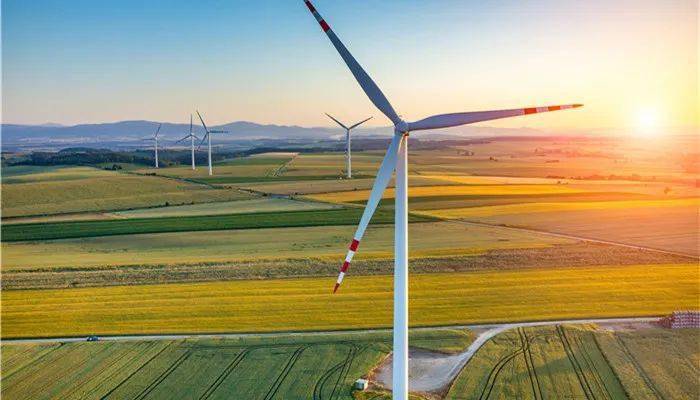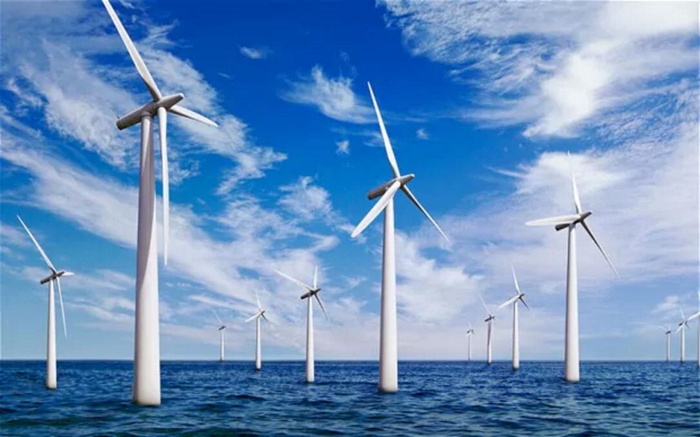German "Capital" monthly website on August 15 published a report written by reporter He Lixian, entitled "China discovers the European wind power industry", compiled as follows:
China's Ming Yang Intelligent Energy Group Co (Ming Yang Intelligent) has supplied equipment for the 30 MW Belle Olico offshore wind farm in southern Italy in 2022. Although small in size, the Belle Olico offshore wind farm is the first offshore wind farm in Europe to use Chinese wind turbines. In June this year, Ming Yang Intelligence also established a strategic partnership with the UK's Opegee Group, focusing on promoting the construction of offshore wind farms in the UK. Jing Ma, international CEO of Ming Yang Intelligence, said, "The UK is a key market for us to expand our clean energy portfolio." In China, Ming Yang Intelligence is also building wind farms off the coast of Guangdong together with Germany's BASF.
So far, however, this cooperation remains a big exception. According to the Brussels-based European Wind Energy Association, almost all wind farms in Europe use turbines made in Europe: "There are more than 250 factories producing turbines and their components throughout Europe." The wind power divisions of Vestas Wind Technologies, Siemens-Gomezza Renewables and General Electric dominate the local market.
But they may now face competition from the Far East. Just as happened in two major industries - photovoltaics a decade ago and heat pumps more recently - manufacturers from China are squeezing into the world wind power market. No other country manufactures as many wind turbines each year as China.

Consulting firm Trivium China explains that China is purposefully marketing its renewable energy technologies abroad. China has recently reached a number of agreements on matters such as the construction of wind farms at the China-Central Asia Summit and at a summit with Brazil. For example, HuanTai Energy, a private company from Shanghai, signed a contract to build a 500 MW wind farm in Samarkand, Uzbekistan. According to Trivium China, HuanTai Energy is also one of the largest renewable energy investors in Kazakhstan.
"Tapping into promising markets such as Uzbekistan and Brazil will help Chinese cleantech suppliers to further develop scale and cost advantages over their Western competitors," say experts at Trivium China. They expect such projects to continue to grow. Beijing doesn't want to rely solely on the European Union or U.S. sales markets.
That's because the EU is a promising but not easy market for Chinese turbine manufacturers. Brussels wants to increase the share of wind energy in Europe's electricity consumption to 43 percent by 2030, up from the current 17 percent. That means 30 gigawatts of new installed wind capacity per year, according to the European Wind Energy Association. However, the EU and manufacturers are working to produce the wind turbines necessary to achieve this feat as autonomously as possible.
The problem is that, according to EWEA, there are already bottlenecks in the European wind supply chain: "Orders from manufacturers of offshore wind farm piles and installation vessels are already several years away. The wind industry must get cables, drives and even steel towers from China." Although a new factory is under construction, this is not enough to realize the expected large-scale expansion.

Chinese turbine makers such as Ming Yang Intelligence are securing orders in Europe due to supply bottlenecks.
Germany's Rheinland Group has ordered 104 wind turbines from Denmark's Vestas and 104 monopile foundations from China's Daikin Heavy Industries for the construction of an offshore wind cluster with an installed capacity of 1.6 gigawatts off Germany's North Sea coast. Rheinland announced that both companies have been selected as preferred suppliers. Daikin Heavy Industries is the world's largest supplier of wind tower and offshore wind pile equipment, according to Rheinland.
Joseph Webster, China expert at the Atlantic Council's Center for Global Energy, writes: "European wind energy should continue to benefit from China's industrial base and technical expertise." At the same time, Europe must remain competitive. Says Webster, "Western wind turbine manufacturers such as Siemens-Gomezza, Vestas, and General Electric are all fighting for profitability."
So far, however, the EU has not imported significant quantities of finished wind turbines from China. Webster said international turbine trade is limited by turbine size and transportation costs. Unlike photovoltaics 10 years ago, wind turbine manufacturers now have political support. The expert said, "Given these technical, economic and political factors, there is a risk that very small Chinese wind equipment companies will undercut their European counterparts in the European market."

